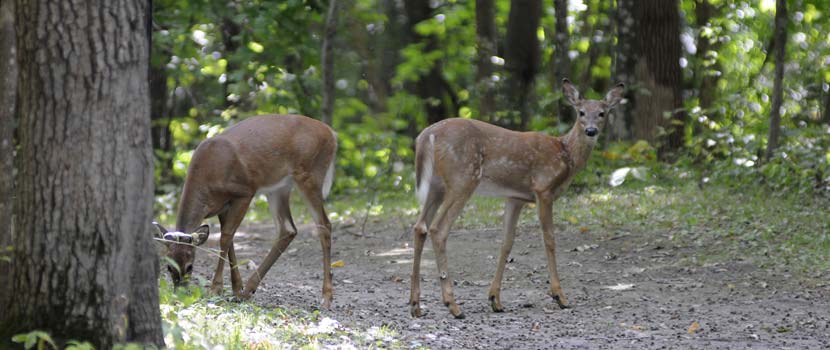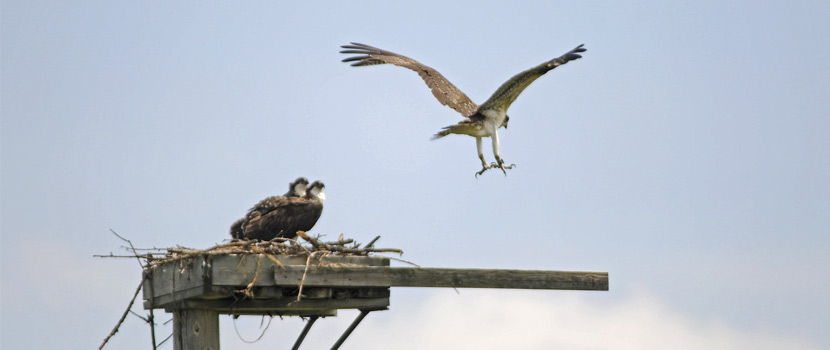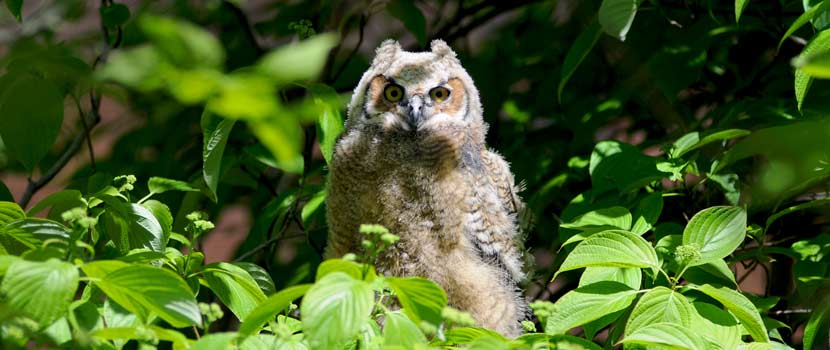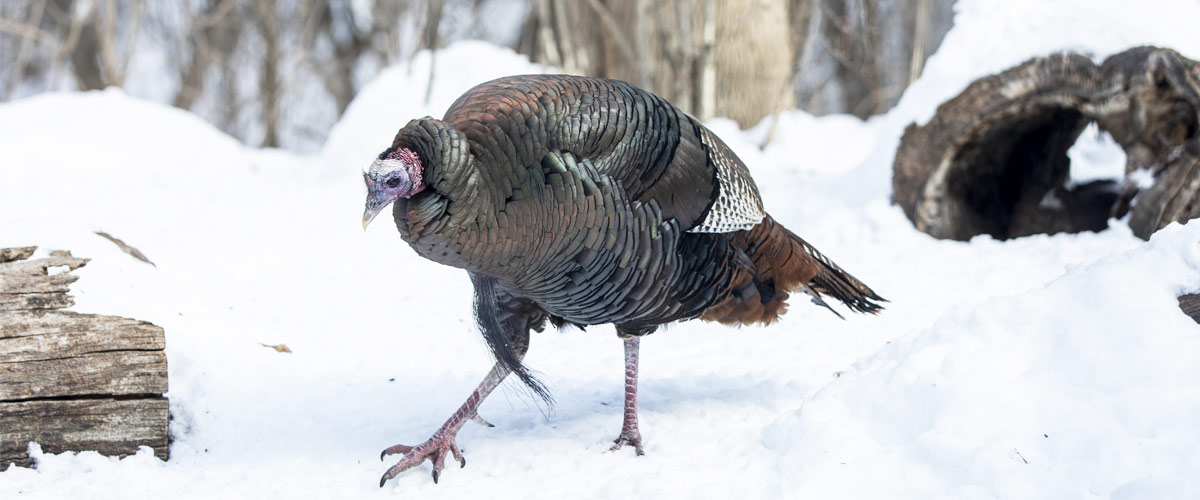
While the Pilgrims may have had wild turkey at the first Thanksgiving in 1621, the first settlers in Minnesota did not. Prior to European settlement, wild turkeys were only found along the Iowa border in Southeast Minnesota. As the state was settled, the few turkeys that were here were eliminated by hunting and habitat loss.
Wild turkeys did not exist in Minnesota for almost a hundred years before reintroductions were successful in the 1970s.
During the years without wild turkeys, domestic turkey populations grew on farms across the state. In the early years of turkey farming, the farmyard turkeys looked like wild turkeys. The white turkeys that we see on farms today did not become common until around the 1940s.
Reintroducing Turkeys in Minnesota
Turkey were first reintroduced in southeastern Minnesota in 1973 with 29 birds from Missouri. The population grew rapidly, and the first hunting season was held in 1978; 94 turkeys were harvested. Currently, more than 10,000 turkeys are harvested through hunting every year.
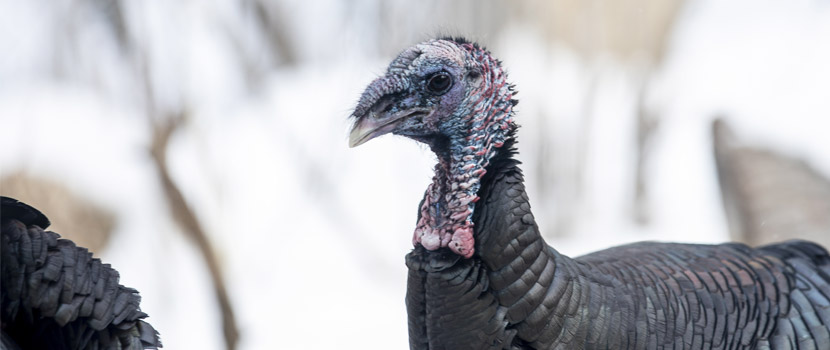
Turkeys in Hennepin County
Turkeys were first released in Hennepin County in 1992 just east of Baker Park Reserve on private property. The Minnesota DNR released additional turkeys in the Minnesota River Valley and at Carlos Avery Wildlife Management Area. These populations grew, and turkeys are now found throughout the Twin Cities metro, including in Minneapolis and St. Paul.
Turkeys Across the Country
Turkeys have been introduced across the United States and are now found coast to coast and in Hawaii. The only state without turkeys is Alaska.
The Natural History of Turkeys
There are six subspecies of turkeys in North America. In Minnesota, we have eastern turkeys. Wild turkeys range in size from 13 to 30 pounds, and males (toms) are larger than females (hens).
Males have a large spur on their legs and a “beard” coming out of their chest. It is a specialized feather that looks like horse hair bristles. Males also fan out their tails and strut during the breeding season.
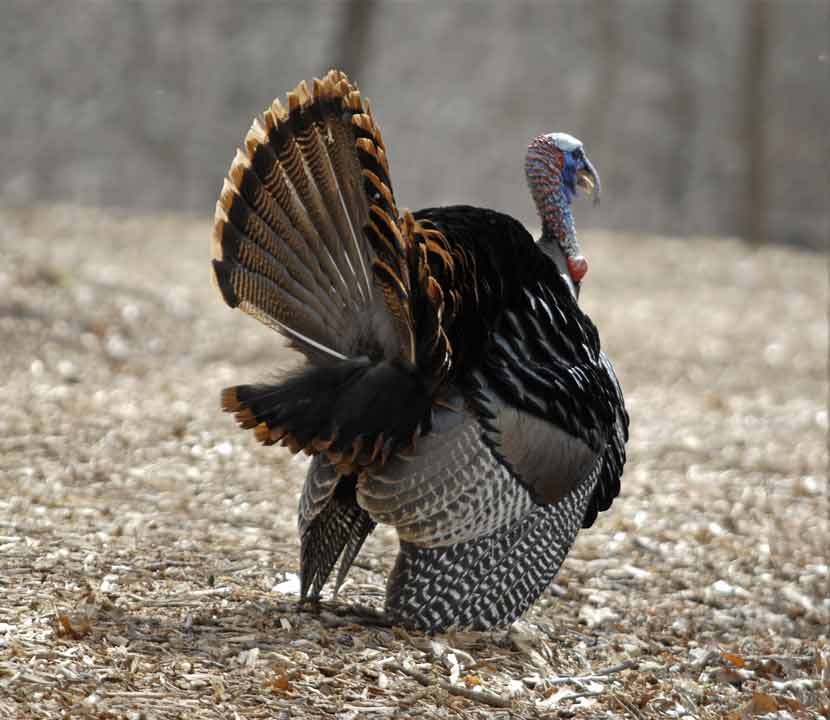
Breeding and Hatching
The breeding season goes from mid-April to mid-May, depending on the weather. Hens lay between eight and 15 eggs and don’t start incubating until the last egg is laid. It then takes 28 days for the eggs to hatch.
When the eggs hatch, the chicks leave the nest with the hen within a day. The chicks feed themselves immediately, but depend on the hen for warmth and protection.
Growing Up
Young turkeys, or poults, get their primary flight feathers early and can fly up to a roost when they are just a couple of weeks old. They will stay with the hen for up to four months.
Poults feed on a variety of insects, green vegetation and seeds. As they get older, seeds and nuts make up the majority of their diet. Acorns are one of their favorite foods.
Where Can You See Turkeys in Three Rivers?
Turkeys are found in all Three Rivers park reserves and regional parks. There have been flocks of over 30 birds on the lawn and parking lot of the Field Operations Center in French Regional Park.
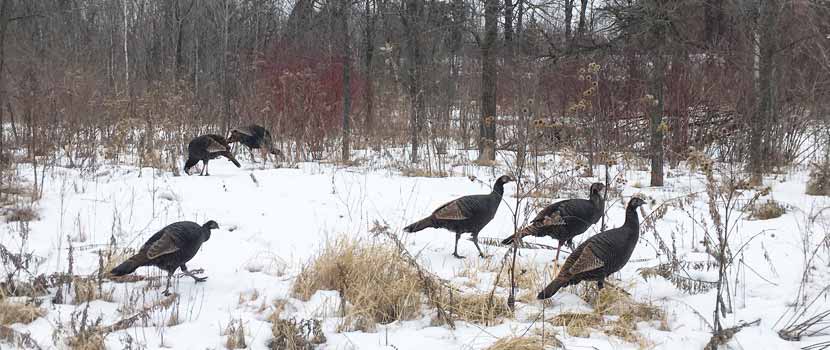
We do not manage the wild turkeys in our parks. Complaints of aggressive birds are rare and mainly occur in the spring mating season. Turkeys have sometimes been known to tear up gardens and disturb the understory of woodlands, but these problems have not been found in Three Rivers.
What To Do When Backyard Turkeys Become a Nuisance
Today, it’s common to find turkeys in your backyard, no matter where you live in the metro. Most people enjoy seeing them, but occasionally they become a nuisance.
They may be attracted to your yard because of a bird feeder, especially if there is a lot of seed on the ground. The best way to discourage them is to remove the feeder. You can also spray them with water, chase them away, or throw a ball towards them.
Please note that you are not allowed to harm a turkey without permission from the state DNR.
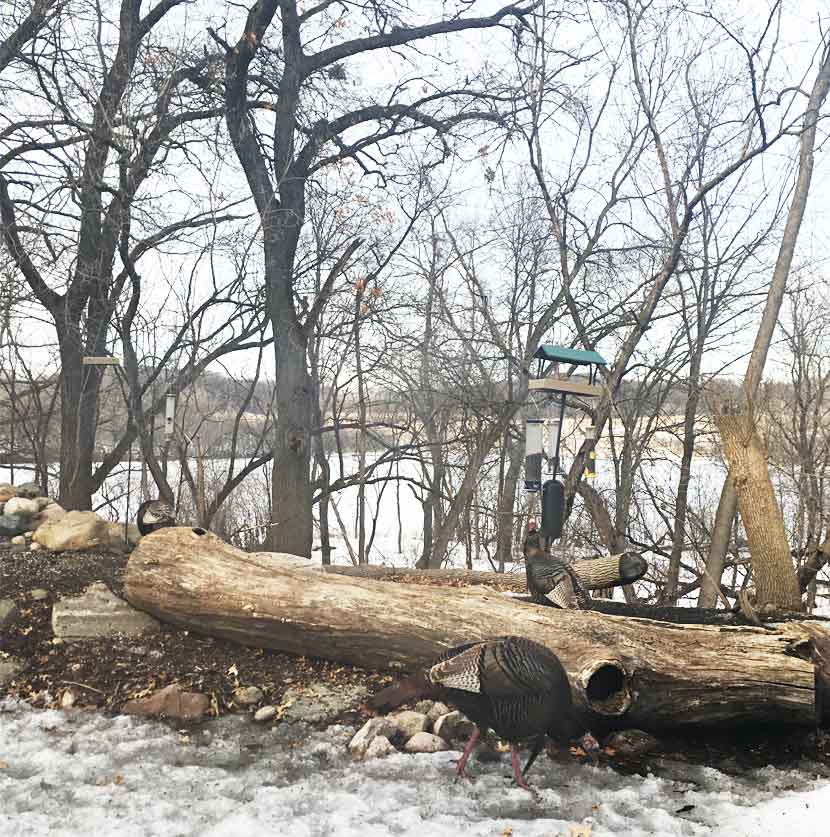
A Thanksgiving Turkey Quiz
Want to add some fun to your Thanksgiving meal? Quiz your friends and family on wild turkeys! Here are some questions to get you started:
- Have turkeys always thrived in Minnesota?
- In what decade were turkeys first reintroduced in Minnesota?
- What is a young turkey called?
- How many turkeys are harvested through hunting each year?
- How many eggs do hens lay?
About the Author
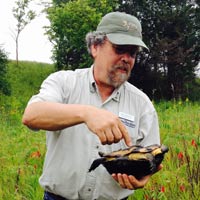
John Moriarty is the Senior Manager of Wildlife at Three Rivers Park District and has been with the Park District for 15 years. He has been involved in many of the wildlife restoration efforts and initiated the snake and butterfly efforts. John has led several projects to increase prairie habitat in the Park District. John likes exploring natural areas and looking for all types of plants and animals, but especially turtles.
Related Blog Posts
Why and How Three Rivers Manages Deer
By: John Moriarty
Deer can be fun to see in the parks, but too many of them can be detrimental to the environment and dangerous to drivers.
Osprey Reintroduction: The Great Success Story
By: Steven Hogg
Ospreys used to be very common in southern Minnesota, but they disappeared from the Twin Cities after World World II. Learn about the program to bring these amazing birds back and how wildlife can survive in an urban area when given the right tools for success.
Owls of Three Rivers
By: John Moriarty
There are 10 species of owls that have been found in Three Rivers Park District. Discover which owl is most commonly seen or heard in the parks and learn more about its habits and lifestyle.
